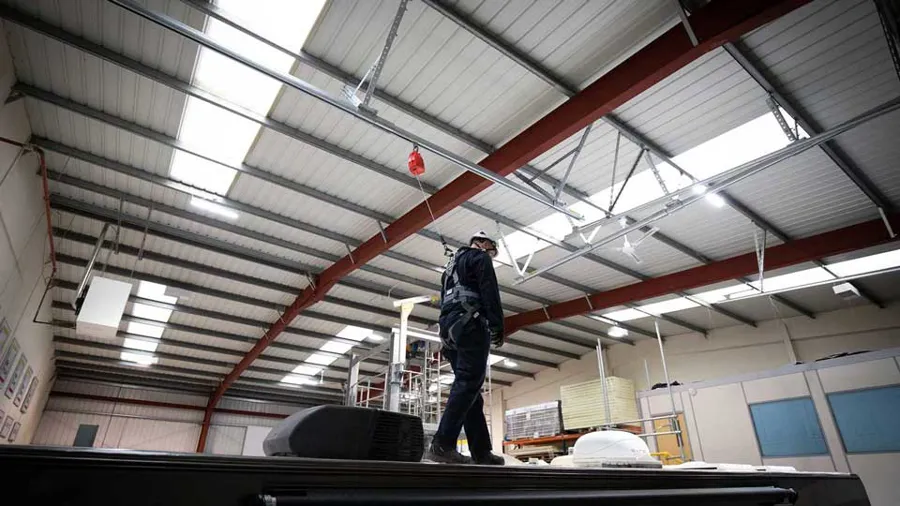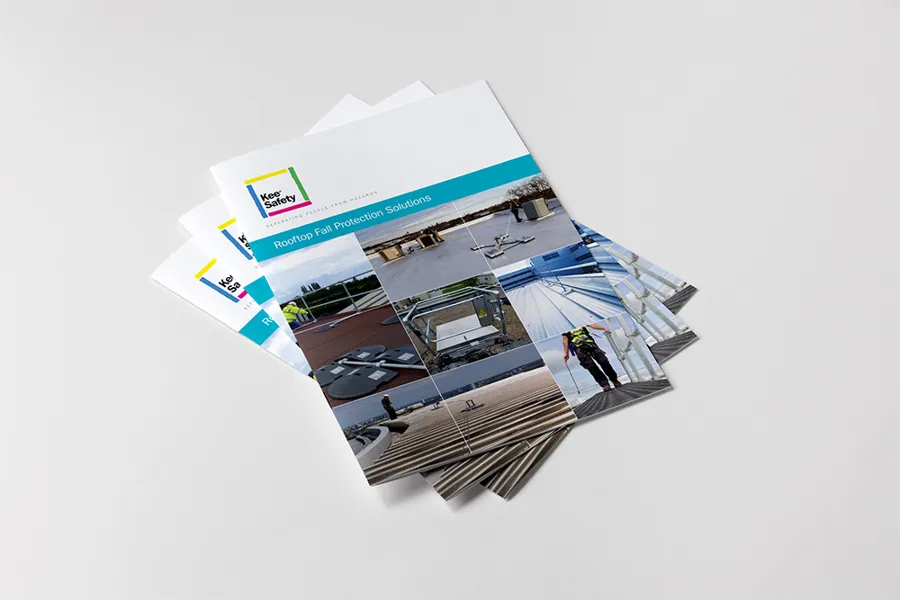
You are visiting the Canada Kee Safety website from United States. Would you like to go to the United States site?
From aluminum to zinc, Canada is rich in metal and mineral deposits. In 2021, the country produced more than 60 metals and minerals—directly employing about 377,000 people—and at $103 billion—accounting for 21% of the nation’s merchandise exports. According to the Government of Canada, with nearly 200 mines, Canada ranks among the top five global producers of diamonds, gemstones, gold, indium, niobium, platinum group metals, titanium concentrate, and uranium.
Mining is also an inherently dangerous occupation. While cave-ins and exposure to noxious fumes may come first to mind, fall hazards—above and below ground—should not be overlooked. Even a fall from a short height can cause serious bodily injury. A fall to a lower level can be fatal. It is, therefore, important for mine owners and operators to provide comprehensive fall protection for their employees.

Guardrails separate people from fall hazards on walkways, stairs, ramps, platforms, and roofs. They also create barriers that mark unauthorized or unsafe areas (e.g., vehicle or rail traffic). For strength, durability, and corrosion resistance, pipe-fitted aluminum or galvanized steel railing systems are recommended over welded rails.
Unlike welded rails, pipe-fitted safety railings are modular, so they can be reconfigured to meet changing needs at the mining site. Furthermore, some mines have been operating for decades. Since welded railing connections will deteriorate or become damaged in the harsh environment of a mine, the sooner old, welded railings can be replaced, the better.
Guardrails at mines must meet the same safety standards as guardrails used throughout all industries. According to Canada Occupational Safety and Health Regulations, SOR/86-304, Sections 12.01 to 12.09, safety railings must be highly visible—powder coating is an excellent option—and designed to meet a force of 890 N applied in any direction along the top rail.

Ancillary buildings with flat and low-slope roofs at mining sites can have rooftop equipment (e.g., HVAC, solar panels) that require servicing and repair. A perimeter roof guardrail system provides “collective” fall protection for maintenance workers. Collective means that the guardrails protect multiple workers at once. No special training or frequent inspections are required as with tie-off lifeline systems.
Rooftop railing systems are available that do not penetrate the roof membrane. Modular in design with freestanding counterweight bases, they can be configured to meet the requirements of the roof, including narrow spaces. For standing seam metal roofs, systems are available with bases that bolt to the metal corrugated roof seams.

The modular, component-based railing concept can be taken a step further with static work platforms. Designed to service machinery and equipment, work platforms have sturdy bases, frames, anti-slip steps and platforms, plus fall protection railings. Custom work platforms can be engineered to meet the needs of working on specific equipment or the parameters of the worksite.
Platforms reduce or eliminate the need for ladders, thus bolstering safety and productivity. Constructed with aluminum or galvanized steel, they are strong, durable, corrosion-resistant, and can be reconfigured on-site. Air and electricity can be routed through platform workstations. They can also be equipped with heavy-duty casters when mobile work platforms are needed.

Servicing vehicles and equipment from above is a known area where fall protection is needed. Although also done working at height, the loading and unloading of rail cars are tasks where safety precautions can easily be overlooked. A rigid rail track system will enhance worker safety for these and other jobs that should be conducted from overhead.
Such a system can be mounted to beams, trusses, or concrete. A trolley connects the rigid overhead rail to a lifeline system and allows freedom of movement. If a worker slips, the system stops a fall with a shorter drop. This minimizes the chance of personal injury and damage to products or equipment.

Guardrails, work platforms, and overhead rigid rails cannot fit everywhere in a mine where there are fall hazards. Active all protection systems, such as a high-visibility lifeline, are often needed. However, it is easy to overlook the amount of training involved in using and inspecting a complete lifeline system.
IRATA Rope Access Training provides certified instruction in a wide range of areas, including rigging, maneuvering, inspecting, rescuing, supervising, and more. Specialized training for Rescue After Fall is another essential exercise to help promote safety for mine workers.
The importance of mining is difficult to overstate. It is a significant component of the Canadian economy and provides the raw materials for countless products necessary for our way of life. There are also many hazards associated with mining, though injuries from falls are easy to overlook compared to workers being trapped or exposed to airborne particulates. With ground-based and rooftop railings, work platforms, and overhead rigid rail systems—supplemented by certified training—the dangers for mine workers can be drastically reduced.

As the world’s number one producer of potash and number four oil supplier, Canada plays a leading role in the global economy. Here at home, it is essential that workers in the hazardous occupations of potash and oil sands mining are appropriately safeguarded. Personal Protective Equipment (PPE) comes immediately to mind. What cannot be overlooked, however, is fall protection equipment.

Kee Safety: Your Fall Protection Experts
Kee Safety is the world’s leading fall protection expert. We engineer, manufacture and install fall protection solutions that safely separate people from hazards. Our OH&S-compliant products and systems are third-party tested and trusted to ensure consistent performance at the highest level.